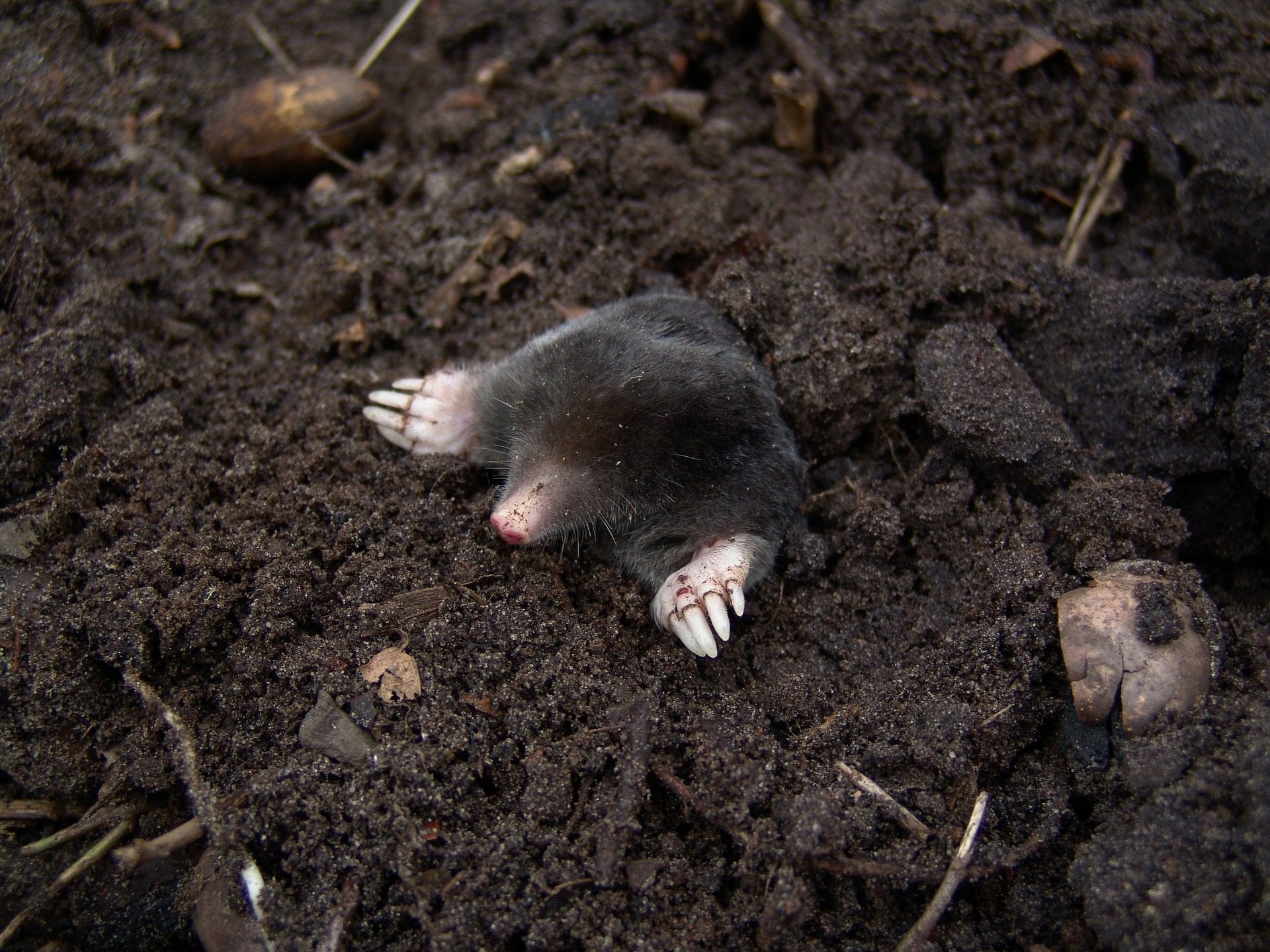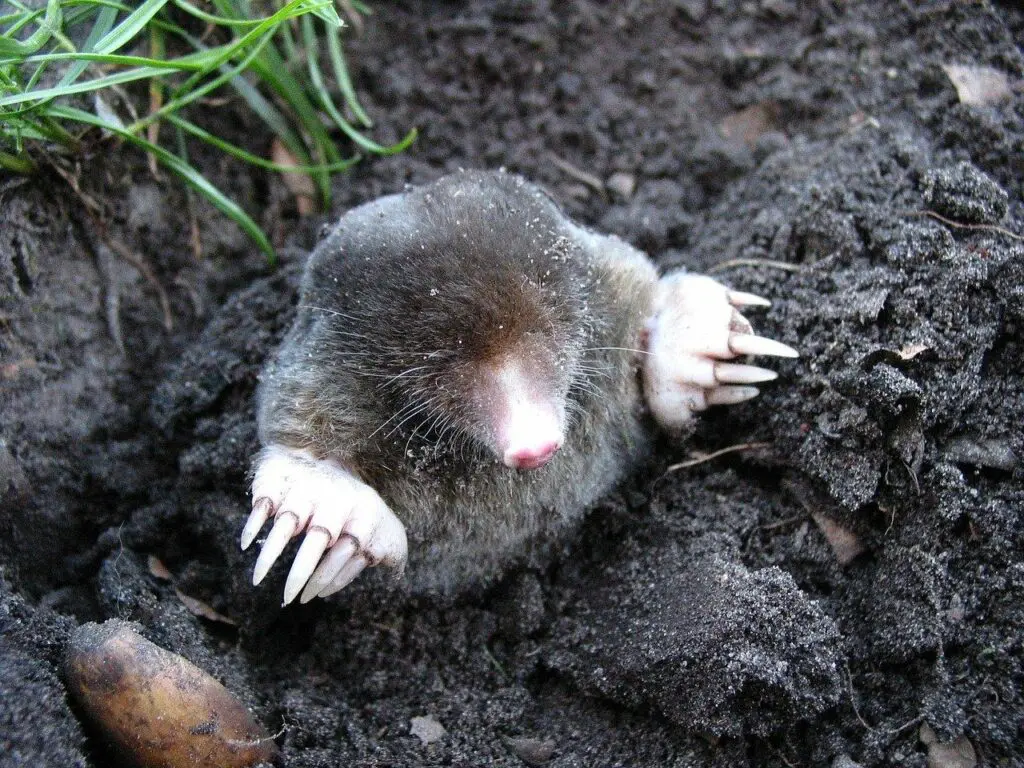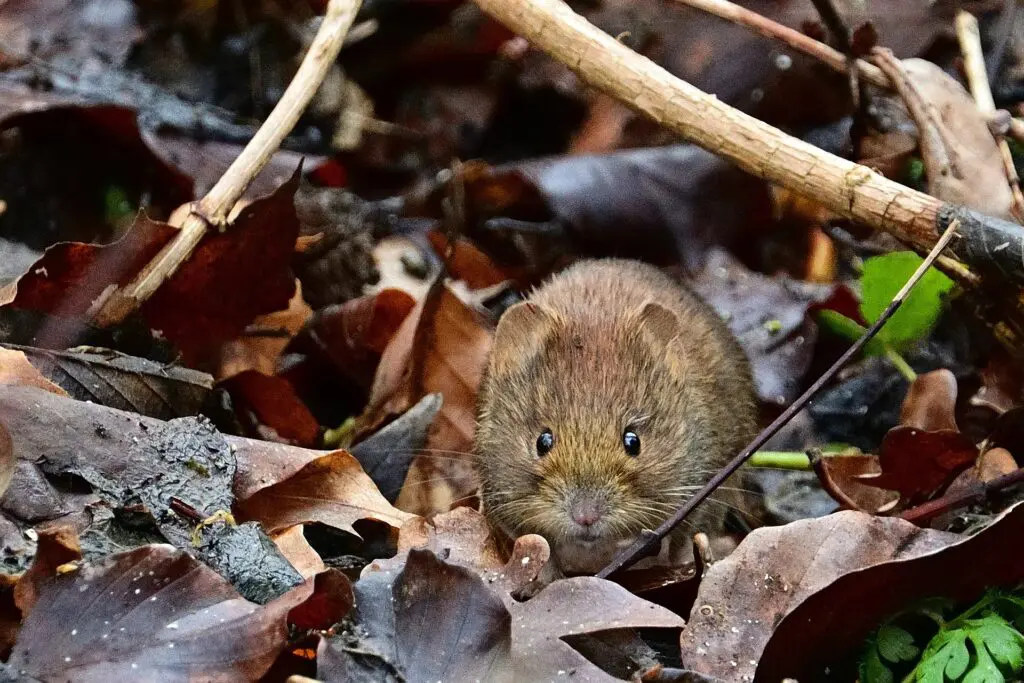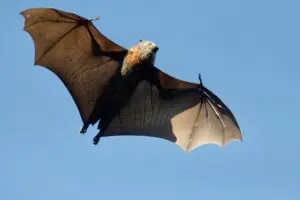

Moles and voles are both notorious for ravaging our backyards and gardens, and they are often mistaken for one another. In this guide, we’ll lay out the differences between moles and voles, from appearance to prevention, so you can bolster your yard’s defenses based on which pest you’re dealing with.
Appearance
Ranging from roughly 4 to 7 inches long, moles are small mammals with even smaller eyes and ears. In fact, they do not even have external ears, just ear canals. Their tiny features are almost completely hidden by the short, brownish-gray fur that covers their bodies. Their fur has no grain, meaning it does not grow in a specific direction, which allows them to freely move forward and backward through tunnels. Moles’ tails are about 1 inch long. A mole’s two most distinguishing features are its elongated, hairless snout and its large, paddle-like front feet. Perfect for digging, these front feet are turned outwards and feature prominent claws.
Unlike moles, voles are rodents and are often mistaken for mice. Similar in size to moles, they range from around 5 to 8 inches in length. They are reddish-brown with gray bellies. They have small, rounded ears, and their tails are about ¾ of an inch long. Their front feet are small and they feature skinny claws. Voles have shorter, more rounded faces than those of moles, and they have orange front teeth.
Diet
Moles are carnivores whose diet mainly consists of beetles, grubs, earthworms, and other similar animals that live in the soil, many of which are considered garden pests. Moles will consume as much as 100% of their body weight in food each day, adding up to around 50 pounds of food in a single year!
Voles mainly eat bulbs, garden vegetables, grass, roots, seeds and tree bark. However, they will also eat small insects like gypsy moths and snails. They have even been known to nibble at the remains of dead animals.
Habitat and Behavior
Moles spend most of their time underground, digging tunnels in search of food. Since they eat so much, they are constantly looking for their next meal. Their tunnels are usually around 10 inches deep, but they will dig shallow tunnels as well. While digging, they push dirt to the side with their large, outward-turned front feet, making it look like they are doing the breaststroke through the dirt. Moles live in the tunnels they dig, and they tend to stick to habitats like grasslands, meadows, wetlands, and woodlands. They are most active during the early morning and late evening and they like to emerge after a warm rain. Although their peak activity is during spring and fall, they are still active during the summer and winter. They do not hibernate- instead they dig deeper into the ground beyond the frost line.
Voles live in shallow burrows, and they will sometimes live in abandoned burrows built by other animals. They like their burrows to be in low-lying vegetation. In fact, most of their activity occurs under covered areas like shrubs. They prefer to travel above ground, so they do not dig tunnels quite as often as moles do. Instead of digging through the dirt, they make pathways through the grass or snow. Voles, like moles, are active year round and are most active at dawn and dusk.
Damage
Moles are of course known for their tunnel digging, and rightfully so- they can dig at a remarkable pace of 18 feet per hour! Unfortunately for our yards, that means they can dig as much as 150 feet of new tunnel every day. Areas with tunnels feel squishy to step on and may collapse. Moles push the dirt from the tunnels they dig up to the surface, creating volcano-shaped mounds. These mounds are known to kill grass. Finally, while they do eat harmful pests, moles eat beneficial insects as well. Needless to say, moles can wreak havoc on both the structural integrity and the appearance of your yard.
As mentioned before, voles prefer to travel above ground. They chew their way through grass to create pathways to and from their burrows and food sources. During the winter, they travel from place to place underneath the snow. They will dig underground tunnels as well, but when they do they tend to stay just below the surface. Moreover, voles will lay waste to gardens by eating bulbs and the roots of plants, fruit trees and shrubs. Plants that have been damaged by voles will start to yellow and wilt, and may fall over.
Prevention
Moles

- Trapping is perhaps the most effective method of mole control. There are a number of types of mole traps available, but it is best to use a humane trap and release the mole at least 5 miles away from your (or anyone else’s) yard. Snap traps like the ones used for mice will not work on moles.
- Vibrations are quite effective in scaring moles away. Spinning daisies, pinwheels, and homemade thumpers give off vibrations that bother moles, causing them to seek other digging grounds.
- Soak tunnel entrances with a mix of 3 parts castor oil and 1 part dish detergent. This will taint the flavor of their food supply and they will look for their meals elsewhere.
- Roofing tar is another great deterrent, as moles hate its odor. Dip an ear of corn in the tar and place it in a tunnel entrance.
- Place Barriers around your plants. Dig a 2 or 3 foot deep hole that is wide enough to house all of the plants you want to protect. You can also dig multiple smaller holes if you have a large garden. Line your hole or holes with ½ inch wire mesh screen, and then fill them back up with dirt and plant away!
- Stop watering your lawn. Of course, you don’t have to stop altogether, but the less often you water your grass, the harder the soil becomes. Moles prefer softer soil.
- Cats are great for scaring away small pests. Even if they are not great hunters, their presence alone will send small pests running.
- Do not use mothballs. First of all they do not work, but more importantly they are controlled by the EPA, which means using them outdoors is considered misuse of a pesticide and is therefore illegal. There are chemical repellents that are meant for moles, but they pose a risk to children, pets and wildlife. If you do choose to use chemical repellents, always read and follow the instructions carefully.
Voles

- Removing their habitat is the best way to prevent voles. Since they prefer to stay under cover, remove all dense vegetation, heavy mulch, weeds, and snow. Mow all grassy areas regularly, keep shrubs trimmed, and remove mulch from around tree bases.
- Place barriers around your plants and trees. Use a wire screen with a mesh of ¼ inch or smaller to create a fence that reaches about 12 inches above ground and 6 to 10 inches below ground. You can also use the method listed in mole prevention, of lining holes with wire mesh. When it comes to trees, wrapping the lower trunk works as well as a wire barrier. For bulbs, try adding gravel to the planting hole and treating the newly planted bulbs with a fungicide.
- Traps baited with apples or peanut butter are quite effective for vole control. Snap traps do work with voles, as do humane traps.
- Clean beneath bird feeders. Voles love to eat the seeds that fall on the ground, but they will stop coming around when they no longer find food.
- Cats, once again, are great for deterring small pests.
Think you might have moles or voles on your property? Give us a call today!






